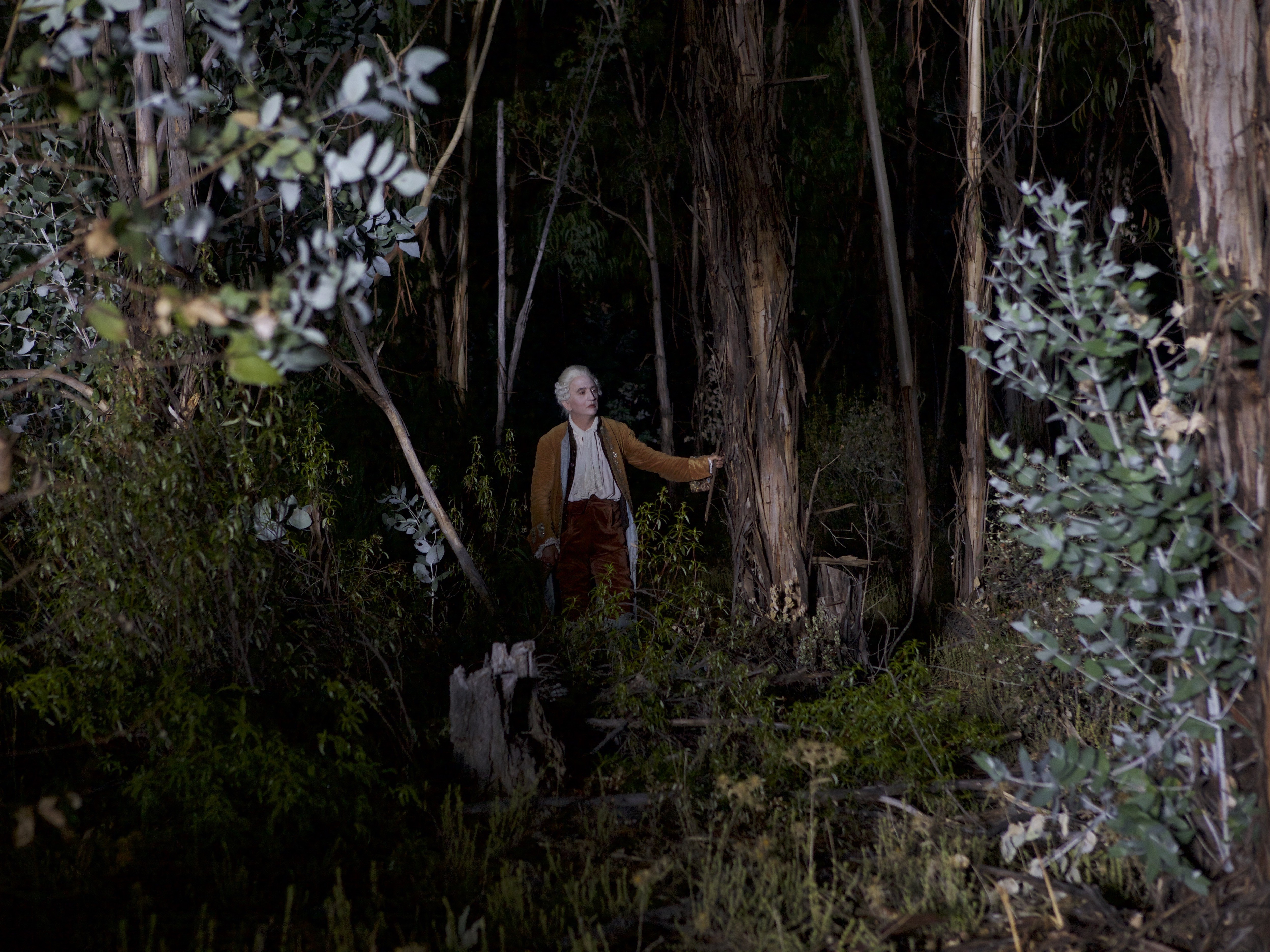
Just before the French Revolution, in a forest outside Berlin, a band of libertines expelled from the court of Louis XVI rendezvous with the legendary German seducer and freethinker, the Duc de Walchen (Helmut Berger), to convince him to join in their mission: the rejection of authority and all moral boundaries. What begins as an evening of strategizing on the proliferation of libertinage, descends into a Sadean night of pansexual one-upmanship.
“Liberté emerges out of both Serra's two-screen installation, Personalien, (2019, 45') at the Reina Sofia in Madrid, as well as his eponymous 2018 play staged at the Volksbühne Berlin. Its affinity for all these media is immediately clear: taking place on the cusp of the French Revolution in an isolated European forest upon which night rapidly falls, we watch various tableaux of aristocrats and their servants effectively cruising for sexual stimulation or voyeurism in a languorous, story-free procession of isolated actions inside sedan chairs and out in nature.
While the premise of the film is theoretical and abstract, what follows throughout this chilled out viewing experience is very simple: immersing us in indolent atmosphere of fetid sexuality, evoked through Serra’s typically beautiful and unique quality of digital photography, here mottled in dark shadows and the knubbily textures of foliage and 18th century embroidery. (...) The film’s desolate and self-involved sex practice is clearly evoking Pasolini’s Salò (1975), yet it still skirts greater explicitness.”
Daniel Kasman1
“Mixing non-professional performers, theatre actors, and even members of his crew (as well as the great Helmut Berger, terrifically bewigged as the legendary German seducer and non-conformist the Duc de Walchen), Serra adopts a Warholian approach to the Sadean activities, allowing his players to extemporize some of their BDSM. While some of the sex is graphic, the film's focus is on the interplay between exhibitionism and voyeurism, the seen and the unseen, lust and tedium, as cinematographer Artur Tort masterfully captures the carnal proceedings in images that recall the great neoclassical and rococo tableaux of Watteau, Fragonard, and Boucher. Strangely despectacularized, languid, and somewhat sombre in tone, Liberté sees Serra at the height of his powers, boldly enacting his artistic freedom and continuing to make radical and subversive work in an increasingly conservative cultural milieu.”
Andréa Picard2
”Serra is, of course, hardly the first filmmaker to take an interest in extremes of darkness, in the seductiveness of deep shadow, in the productive capacity of the inscrutable image, but his use of digital photography’s ability to register the barest traces of activity in the absence of light has allowed him to arrive at the peculiar visual movement which gives form to the narrative situations. (...) No one, I believe, has brought cinema quite so close to painting’s ability to render the proximity of process and inertia, to see moments which will go on happening at least as long as there is an audience. Perhaps longer.”
Phil Coldiron3
“With Liberté (a film that works as an affirmation that these libertines are not more than standard bearers of freedom in any way), Serra realizes one of his most plastic and beautiful works, due to a cinematography in matte tones and lightly grained (which reminds us of the work of Noël Véry in the films of Walerian Borowczyk), and in the way that it submits us to explore through shots of perfect compositions.”
Mónica Delgado4
- 1Daniel Kasman, “Cannes Correspondences #11: Vulgar Confessions,” MUBI Notebook, May 25, 2019.
- 2Andréa Picard, “Liberté – Albert Serra,” TIFF Wavelenghts catalogue, 2019.
- 3Phil Coldiron, “Liberté – Wavelengths,” Cinema Scope, 79 (2019).
- 4Mónica Delgado, “Cannes 2019: Liberté by Albert Serra,” Desistfilm, May 20, 2019.

